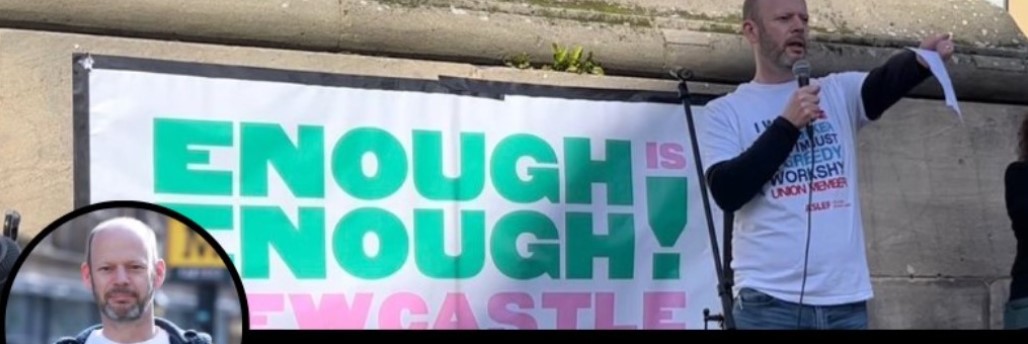By Andy Ford, Warrington South Labour member
Jamie Driscoll lost in his challenge to the hand-picked official Labour candidate in the election for North East mayor on May 2 and the main reasons were outlined in a subsequent editorial. However, the size of his vote and his wide base of support illustrated the huge potential there would be for the Labour Party, if it were armed with a socialist programme.
Driscoll got over 126,000 votes, compared to the 185,000 for the hand-picked favourite of Labour’s right wing, Kim McGuiness. But combined the two votes completely dwarf those of all the other candidates combined. If Driscoll had been allowed to run as a left Labour candidate – as mayor of North Tyne, he had been described as the ‘last Corbynista standing’ – he would have secured fully two thirds of the votes across the whole region, consisting of Northumberland, Durham and the Tyne and Wearside conurbations. The area included two ex-mining areas with deep historic labour movement traditions.
As well as the number of votes, a poll by More In Common found that Driscoll’s support came from a surprisingly broad spectrum. A quarter of his voters had voted Conservative in in 2019, probably conned by Boris’s “pledges” (aka lies), of levelling up, building 40 new hospitals, HS2 reaching further north and the reopening the Leamside Line…all promises dropped afterwards.
Driscoll also drew support from former Greens, Lib Dems and UKIP, a lot of whom refused to vote Labour in 2019, not because of Corbyn’s radical social and economic policies, but because of the nonsensical second-referendum position foisted on Corbyn by his then “close colleague” and ally, Keir Starmer.
Driscoll polled well among older Labour voters
Driscoll’s voters were described by More In Common as more “politically engaged, being much more likely to vote on the day, and tended to be more educated than McGuiness’s supporters”. But he was also polling well amongst older Labour voters, probably older working class voters who remember what a Labour candidate used to be like and should be like.
Those who voted for him showed a huge dislike of ‘Westminster politics’ and were looking for a more genuine devolution, and they supported him because he was seen as a strong local advocate for the region. It remains to be seen whether Kim McGuiness can satisfy these aspirations for meaningful devolution.
Although not victorious, Jamie Driscoll’s campaign shows how a Labour Party standing on basic socialist principles could unify a big majority of the population – the activists and the mass of the working class, youth and the old, and even a majority of the middle class – around the organised workers, and create an unstoppable mass movement for change. Which is exactly why the ruling class and their shadows in the Labour Party worked so hard to prevent it happening.
In a shocking postscript to Jamie Driscoll’s campaign, the leader of Sunderland council, Graeme Miller, seen as a ‘left’, “stepped down” and was replaced in a coup orchestrated by unelected Labour officials, under their misnamed ‘Campaign Improvement Board’. The irony is that Miller had rebuilt support for the Labour Party in the city, from the ruin that had been created by a long period of control by right wing Labour.
It was down to his work that the official Labour vote held up so well in that city on May 2. Indeed, McGuiness’s vote in Sunderland made a considerable contribution to her victory. Miller’s efforts were repaid by the Labour machine discarding him like a dirty rag.



